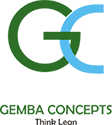PRODUCTION PLANNING AND CONTROL
1.0 Introduction.
Production planning and control (or PPC) is a maintenance strategy that aims at enhance the efficiency by allocating human resources, manufactured goods, and equipment/machines. Manufacturers must create high-quality items at a cheap cost while maintaining adequate flexibility to satisfy quickly changing consumer needs in order to be competitive. Production’s planning and control (PPC) is a critical function which allows a company to have control and visibility over all elements of production. It makes it possible to increase efficiency, collaboration, and the use of production-related data. Production planning and control looks at any equipment outages or maintenance schedule and tries to keep things running smoothly.
2.0 Production Planning.
Production planning is the process of planning and allocating raw materials, people, and workspaces in order to satisfy production goods on time. In a make-to-order situation, manufacturing purchases, also known as project tasks, are created when customer payments are placed.
3.0 Production Control.
Production control is the activity of monitoring and controlling a large physical facility or physically dispersed service. It is a “set of actions and decision taken during production to regulate output and obtain reasonable assurance that the specification will be met.

Fig. Production Planning and Control Steps
4.0 Steps Involved in Production’s Planning.
Step-1: Planning:
The planning department receives comprehensive information from managers regarding the amount to be produced and the dates when delivery to consumers has been guaranteed. This allows for detailed planning of productive activities. The engineering department also provides the planning department with the required engineering and drawing specifications.
Step -2: Routing.
Routing requires deciding on the work’s direction and also the sequence in which particular tasks will be accomplished. Routing’s purpose is to find the most efficient and cost-effective sequence of occurrences.
Step-3: Scheduling.
Scheduling is referred as the process of estimating the time of completion and operation, and the time needed to finish the entire series as intended, while taking into consideration all important factors.
Step-4: Loading:
A load is an amount of work, and loading is the process of distributing that quantity of work to the processes required to create each item. Assigning jobs to work centers or equipment inside the work centers is referred to as loading.
5.0 Steps involved in Production Control.
Step-1: Dispatching:
Dispatching refers to the act of transmitting something to a certain location. It refers to completing all measures necessary to carry out the production schedule outlined in the routing and scheduling processes.
Step-2: Follow-Up (or Checking the Progress).
The control component of production planning and control is follow-up. It comprises analyzing if work is moving as planned and how far deviations from norms have occurred, along with taking corrective measures to restore Order.
Step-3: Inspections:
Follow-up is a control component of production planning and control. It includes assessing whether or not work is proceeding according to plan, as well as evaluating how far deviations from norms have happened and taking corrective measures to restore order.
Step-4: Correction:
Other phases in the production control process are evaluated, and changes are made as needed. Routings, job scheduling, and even talks with workers who are taking those extended breaks are all part of this.
6.0 Role of PPC in Operations Management:
Because of its interactive function and interdependency with almost every sector of the manufacturing process, production planning and control in operations has a lot of breadth and importance. Figure demonstrates this very clearly. Production’s planning and controlling (PPC) not only offers the entire approach to the manufacturing and production division, but also supervises and controls every step of the working environment, getting feedback from the product / process design and engineering divisions. PPC interacts with all other departments in the manufacturing department in both directions, including production and service, attaining and catalogue, construction and replacement, quality controller, manufacturing engineering, and work studies.

Fig: Role of production planning and Control.
Production’s planning and controlling entails organizing and planning the production process in general. It includes, routing, scheduling, dispatch, inspections, and coordinating, as well as material management, techniques, tools, and operating hours. The eventual goal is to establish the supplies and movements of constituents and labor, as well as machine usage and associated operations, to achieve the intended production outcomes in terms of quality, quantity, time, and location.
7.0 Benefits of PPC.

References.
What is production planning and how to do it? A comprehensive guide.,” ERP Next, 2020. https://erpnext. com/blog/manufacturing/production-plan.
“Production Planning and Control Procedures In A Manufacturing Company,” optal software. https://www.optelco.com/role-of-production-planning-and-control-manufacturing-industry/.
International Journal of Multidisciplinary Innovative Research. ISSN: 2583-0228 Volume 1, Number 1 (Jul’ 2021) pp. 70-78© CIIR, Noida, INDIA https://www.ciir.in
International Journal of Multidisciplinary Innovative Research.
ISSN: 2583-0228 Volume 1, Number 1 (Jul’ 2021) pp. 70-78
© CIIR, Noida, INDIA
International Research Journal of Engineering and Technology (IRJET)
Overview of MRP-I and MRP-Il
Article By:-
Sachin B.

